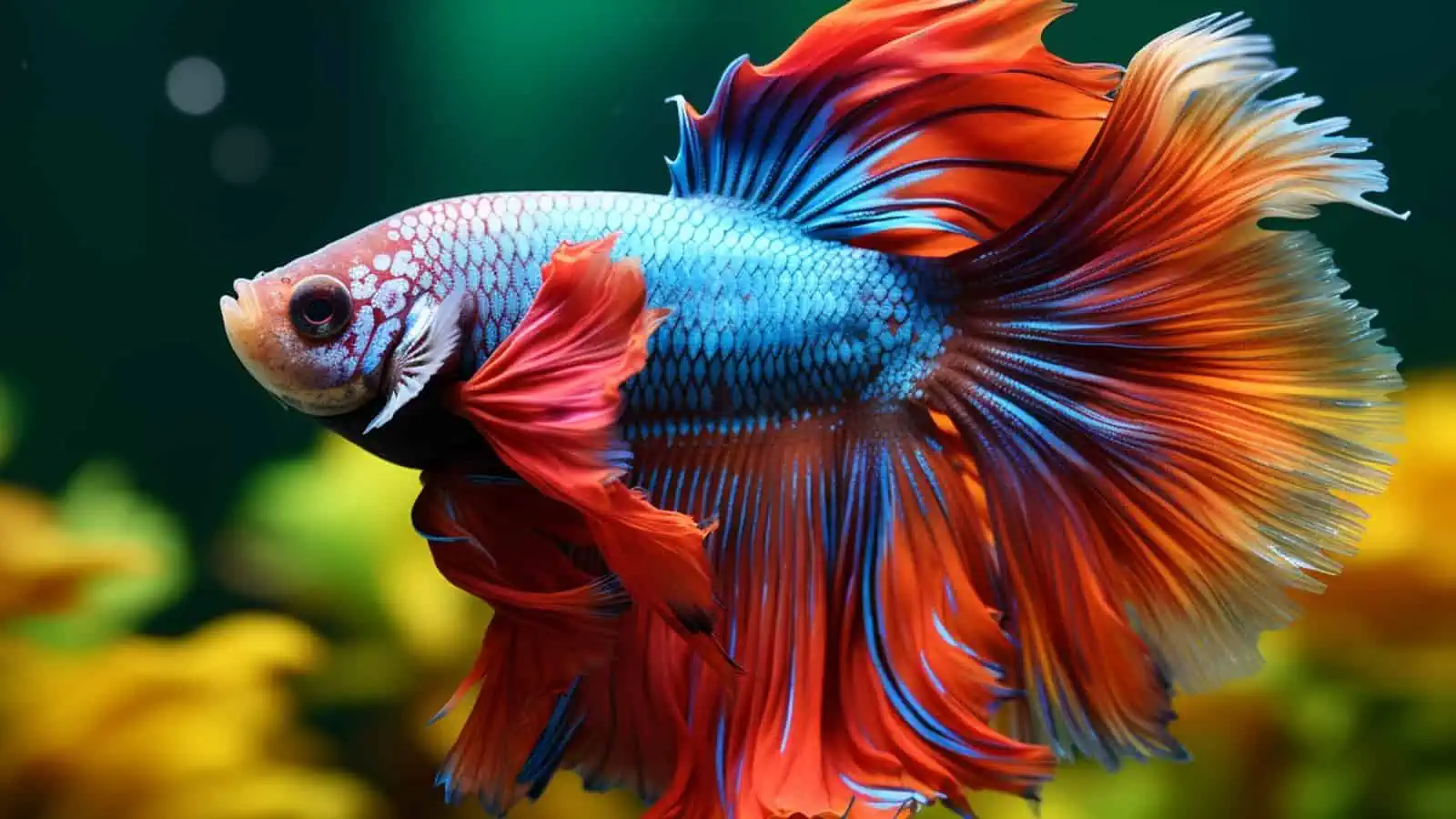Betta fish have captivated aquarium enthusiasts, including me, for decades with their brilliant array of vibrant colors, fancy tail forms, and iridescent scales. There are so many colors to choose from; the variety is truly mind-boggling.
Have you ever wondered what makes the betta fish one of the most visually arresting species in the aquatic world?
Keep reading to learn the fascinating story of genetics, pigments, and the betta’s unique structural biology that gives the fish its spectacular looks.
Key Takeaways
- The diversity of betta fish colors and scale types is largely determined by a mix of color genetics, with specific genes governing various pigments that produce their vivid appearance.
- A betta’s iridescent scales are a product of light interacting with guanine crystals within the scale structure, giving them a shimmering, kaleidoscopic effect.
- Centuries of selective breeding have cultivated a wide range of betta fish variations, each with unique coloration, patterns, and fin types, highlighting the human influence on the natural beauty of these creatures.
Color Genetics
The kaleidoscopic color palette of all betta fish is mostly influenced by genetics. The fish’s genes determine the distribution and density of the pigments responsible for those trademark striking colors and scale types.
Two primary pigment types are involved:
- Melanin: responsible for dark and black shades
- Carotenoids: produce the vibrant red, yellow, and orange hues
Your betta’s genes are inherited from their parents, with each gene controlling a specific color and scale form. However, it’s the combination and interaction of multiple genomes that results in an astonishing variety of color combinations and flamboyant patterns.
That genetic diversity has opened the door for betta breeders to produce numerous distinct betta varieties, each with its own gorgeous color scheme and scale type.
Pigment Production and Function
The pigment responsible for black coloration is melanin, which is produced by specialized cells called melanocytes. It’s the distribution of melanin in the betta fish’s skin and scales that create those striking dark contrasts and patterns that you find in certain varieties of betta fish, such as the butterfly or black samurai.
On the other hand, carotenoids are derived from the fish’s diet, specifically foods such as daphnia, brine shrimp, or special betta pellets. Once ingested, carotenoids are metabolized by the fish’s body and deposited in its skin and scales, resulting in a startling array of vivid colors, including yellow, red, and orange.
Most betta owners say that the betta’s diet, living conditions, and overall health also contribute to the intensity of its colors.
Iridescent Scales

So, that’s where the betta fish gets its beautiful colors. But what about those dazzling iridescent scales?
The iridescence that we love so much can be attributed to structural coloration. Whereas pigments reflect and absorb specific wavelengths of light, structural coloration relies on light’s interaction with microscopic structures on the scales’ surface.
Betta fish scales are made up of multiple layers of guanine crystals. These tiny crystals are arranged in a way that creates a microscopic diffraction grating. When light hits those structures, a process called inference occurs, causing the scales to display those stunning iridescent colors we love so much. The phenomenon can be compared with the vibrant shades and hues you see in peacock feathers and soap bubbles.
Have you ever marveled at the way your betta buddy changes color as he swims around his tank, shimmering like an ever-changing kaleidoscope, and wondered how he does that? Well, the angle at which light hits the betta’s scales influences the colors you see. So, every time your pet changes direction, the light hits his scales differently, and he changes color.
This structural iridescence is most notable in bettas like the dragon, galaxy, and metallic variants, where the interplay of light and scale structure creates a visually stunning effect.
Evolution and Selective Breeding
Of course, the dazzling variety of patterns and colors in bettas we enjoy today didn’t happen by accident or a freak of nature. Those mesmerizing shades you see in the striking specimens available in the trade are the result of centuries of selective breeding by betta enthusiasts in combination with specific betta genetic traits.
Selective breeding enhances desirable physical traits, including colors, unique patterns, and iridescence. Over time, that process has seen the development of lots of betta variants, including:
- Halfmoon
- Crowntail
- Plakat
- Elephant or dumbo ear
All these fish are bettas but appear completely different in terms of physicality, color, patterns, and iridescence.
Final Thoughts
Aquarists love betta fish for their dazzling colors, unique patterns, and unusual finnage.
Over hundreds of years, betta breeders have harnessed the fish’s natural attributes and manipulated them to produce the beautiful specimens you see in the trade today.
So, next time you sit admiring your betta buddy morphing from red to green through blue and back again as he shimmers and glitters around his territory, you know that the science responsible for those looks involves a combination of genetics, pigments, and the betta’s structural biology.
Happy fishkeeping!


